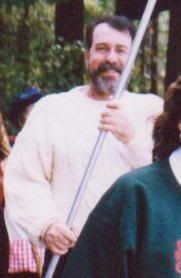Baronet who turned his land into one of Scotland's finest golf courses
Sir Ivar Colquhoun of Luss, the Chief of the Clan Colquhoun, owned one of Britain’s most beautiful estates, at Luss, on the shore of Loch Lomond, with fine views of the lake and of Ben Lomond. He inherited the estate from his father, Sir Iain Colquhoun, who died in 1948.
Although the estate, with its hill grazing for sheep, was not economically viable for agriculture, and its sporting facilities for pheasant and grouse shooting, stalking and fishing were not in the big league, Colquhoun fought a valiant battle against the encroachment of urban sprawl.
He was a principled opponent of wind farms on the ground of aesthetics even when there were lucrative subsidies available and few objections from the green lobby, thus preserving Loch Lomond from an eyesore.
In the event, with nearby Glasgow, once famous for its slums, becoming renowned as a prosperous City of European Culture, the solution to the problem was inspired. Twenty years ago Colquhoun invited the American golfer Tom Weiskopf to develop a twin golf course, and this was eventually achieved in co-operation with the Arizona developer Lyle Anderson. The result is an internationally famous golf course that attracts top professionals in the summer just before the British Open and is well known to television viewers.
The land is leased from the Colquhouns, and their magnificent Robert Adam house, Rossdhu, has become the clubhouse decorated with the family tartan, with their furniture and paintings, while Colquhoun and his wife Kay, who died last year, lived in the dower house next door.
Many people believe the landscape has been improved by Loch Lomond Golf course, instead of being allowed to decline. Colquhoun fought hard to protect the village of Luss, often voted the prettiest village in Scotland, and won a five-year campaign to prevent BP building an oil terminal on his land.
Ivar Iain Colquhoun was born in 1916 and was educated at Eton. He was working on a lumber camp in Finland at the outbreak of war, and joined a Teritorial Army battalion of the Argyll and Sutherland Highlanders as a private soldier. When the Soviet Union invaded Finland in November 1939, he was seconded to the 5th (Ski) Battalion Scots Guards. This was disbanded after Finland was forced to accept Russian terms in March 1940. Then he joined the artillery in Libya and served there during the siege of Tobruk, later to become the subject of some of his drier reminiscences.
He ended the war as a liaison officer with the Grenadier Guards and subsequently a captain in the Coldstream Guards.
Although he served as a JP for some years, he did not enjoy it much. He was a deputy lieutenant for Dunbartonshire and for 20 years chairman of the British Sailors’ Society. He was a keen sailor, often exploring the sea lochs up the West Coast, while his sister, Lady Arran, was a powerboat champion and pioneer. He was a keen shot and gardener with a particular interest in forestry plantations and he loved brightly coloured cars.
He was the eighth baronet and the 30th Laird of Luss. As a member of the Standing Council of Scottish Chiefs, he made regular appearances at clan gatherings and clan games and endorsed the clan museum. From 1949 until 1982 he was chieftain of the Luss Highland Games in July. He was an active force in the Royal National Lifeboat Institution.
He was an enthusiastic traveller, especially in African countries such as Egypt, São Tomé and Guinea, where he steeped himself in the local culture and historical oddities such as distilling from sugar cane and enjoyed puzzling out the purposes of archaeological remains. While travelling to Samarkand with his old friend Sir Iain Moncreiffe of that Ilk, the two eccentric toffs seemed to delight in competing with each other for arcane details of tribal life.
Those who worked for Colquhoun during his 60-year tenure at Luss recall that, although shy, he was a canny and doughty fighter, resisting the lure of engineering development money. His proactive diplomatic efforts to protect the islands in the loch and the cottages on his land were executed with brilliance and a firm hand, often simply saying: “We don’t do that.”
Sir Ivar married Kathleen Duncan in 1943. Their daughter, Iona, married the 12th Duke of Argyll who died in 2001. Their elder son, Torquil, died at the age of 19, and their younger son, Malcolm, succeeds to the baronetcy.
Captain Sir Ivar Colquhoun of Luss, Bt, landowner, was born on January 4, 1916. He died on January 31, 2008, aged 92

















